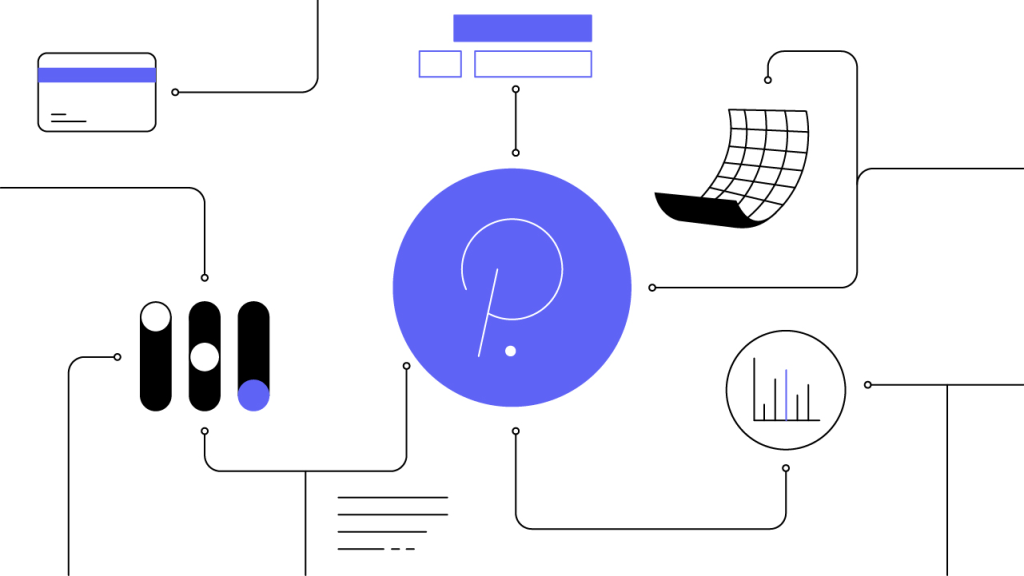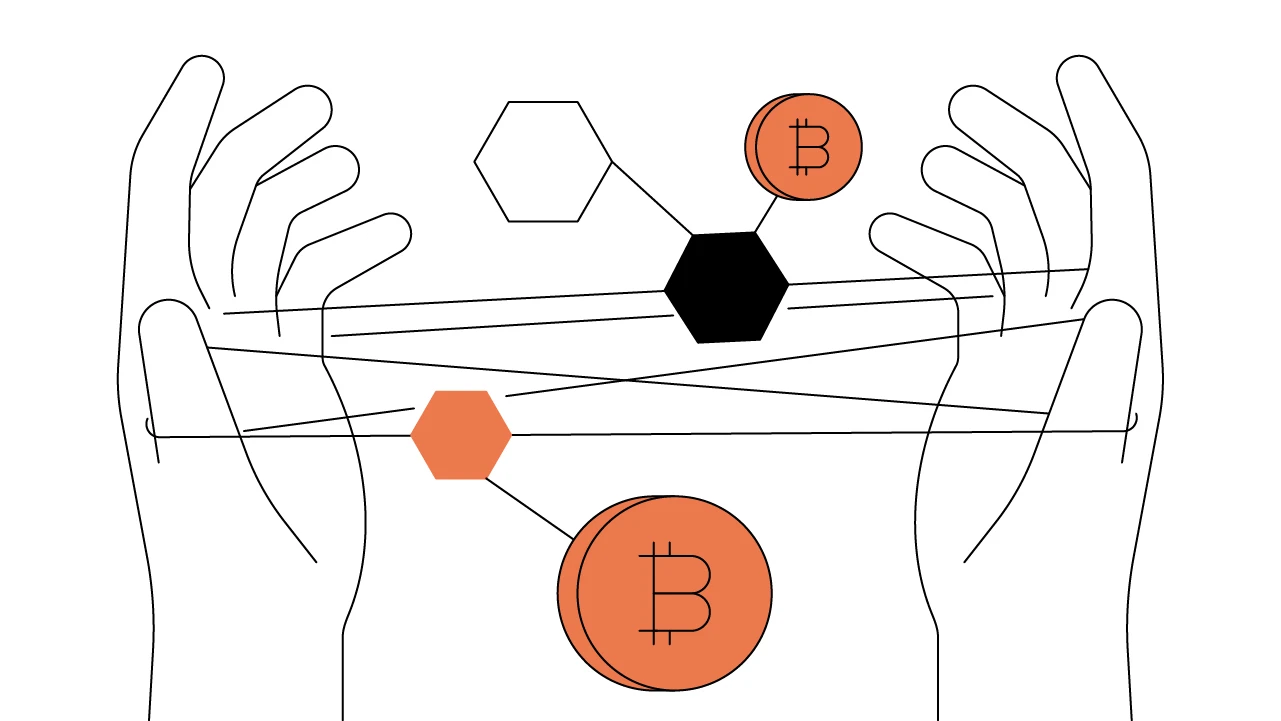Contents
Polkadot (DOT) Governance and Cryptoeconomics
The Polkadot blockchain utilizes a sophisticated governance system to prioritize the interests of stakeholders in administrating the network and its future.
Updated October 11, 2023 • 2 min read

Summary
Polkadot is a protocol that enables independent blockchains to communicate with each other and exchange data and value. It utilizes an on-chain governance system that relies on referenda and its DOT coin to ensure that all stakeholders’ voices are heard.
Contents
The aim of Polkadot is to create a decentralized internet, wherein decentralized applications, services, and institutions from across the blockchain ecosystem can easily connect. To establish its role as a connective fiber between the many protocols of the blockchain ecosystem, Polkadot makes use of an extensive governance and cryptoeconomic system that prioritizes equitability in deciding how the protocol functions. To learn more about the basics of the Polkadot blockchain, we suggest reading our Polkadot 101 article about the protocol and how it works. Here, we’ll discuss its particular governance mechanisms and cryptoeconomics.
Polkadot is designed to utilize on-chain voting mechanisms including stake-weighted referenda, which means that administration of the protocol is managed by users whose votes are weighted by how much of its native DOT coin they hold. The Polkadot blockchain network is built to employ a transparent and sophisticated process to approve or reject network protocol changes, and is also able to enact them autonomously. The Polkadot administration mechanism is decided upon by the Polkadot council, technical committee, DOT coin holders, and other constituents to maintain the long-term viability of the platform.
Polkadot’s Cryptoeconomic System
When the Polkadot crypto network launched in 2018, a total of 10 million DOT was issued. In 2020, the initial supply was redenominated via a community vote, which increased the total supply by 100x. Currently, there are just over 1 billion DOT coins, which have been allocated in the following manner:
50% allocated for initial investors during the 2017 Initial Coin Offering (ICO)
30% allocated to the Web3 Foundation for current and near-term use to continue the ongoing development of the Polkadot ecosystem and its related activities
11.6% held by the Web3 Foundation to be used for future fundraising proposals to maintain the longevity of the project
5% allocated for 2019 private sale investors of the Polkadot project
3.4% allocated for investors who participated in the 2020 token sale
The Polkadot ecosystem makes use of an extensive and complex cryptoeconomic solution that is based on Polkadot’s native cryptographic asset, DOT. These DOT coins are used to help power the Polkadot blockchain network by contributing to the ecosystem in a multitude of ways.
DOT’s main functions are:
Economics: DOT can be minted or burned to reward network nodes that run on top of the network’s consensus algorithm and blockchain protocol. DOTs are also used to fund the ecosystem’s treasury and to control the inflation rate of the asset.
Governance: DOT coin holders help maintain the integrity of the Polkadot protocol’s on-chain decision-making process via the network’s main Relay Chain, which is responsible for network security, consensus, and cross-chain interoperability.
Staking: Using DOT as collateral helps ensure the network functions according to its design, and allows validators to earn rewards for maintaining network security and consensus.
Parachain Allocation via Bonding: DOT coins are also utilized in a rent-like mechanism to decide which parachains — the individual, sovereign blockchains connected via Polkadot — are given priority parachain slots that attach the parachain directly to the Relay Chain. This process works via an auction and staking/deposit process.
Slashing: DOTs play a pivotal role in slashing (or penalizing) Polkadot blockchain network validators and nominators who act maliciously by attacking other nodes or taking part in other unwarranted behavior.
Polkadot’s Main Governance Structure
Polkadot’s governance system is made of several main components:
Council: Polkadot councillors play an important role in the overall direction of the Polkadot ecosystem. All DOT coin holders have the capability to be considered for a council role, however council members are only able to serve a 30-day term, so no single council member assumes too much control over the network. Councillors are responsible for creating proposals, which are then voted on to determine if the proposed changes are in the best interest of the project. Initially, the council launched with 13 seats, but will gradually be increased to a total of 23 seats. Council proposals must be supported by a supermajority, and Polkadot makes use of an Adaptive Quorum Bias methodology to set the parameters for achieving supermajority. Adaptive quorum biasing is a mechanism that the Polkadot council can use to change the supermajority required for a referendum to pass based on the percentage of voter turnout.
Technical Committee: The technical committee is made up of teams that designed and built the Polkadot crypto network, and is responsible for mitigating and detecting software bugs and other errors throughout the network. The technical committee also manages on-chain amendments that can impact unethical voting by malicious actors. This committee is also responsible for fast-tracking emergency upgrades onto the blockchain when there are serious governance or security issues.
Global Polkadot Asset Holders: DOT holders are responsible for voting to select council members through a specialized election process. DOT coin holders can also submit governance proposals if they are seconded by other DOT holders. To reduce spam, Polkadot requires DOT holders to stake DOT coins to submit a proposal.
Polkadot’s Treasury System: Polkadot’s treasury system is managed by the council, and is made up of a large account of DOT assets that are accumulated in two main ways: by adding up a portion of network transaction fees, and via network slashes, wherein validator nodes and nominators are penalized for acting maliciously. The council allocates DOT from specific proposals to keep the project running optimally, to pay software developers, and to incentivize and streamline community engagement. Additionally, DOT coins are allocated for hackathons, to host the Web3 Summit, and for trading the DOT asset through decentralized exchanges and bridges, among other reasons.
Polkadot Governance Mechanisms
As referenced above, Polkadot makes use of several on-chain voting mechanisms, including stake-weighted referenda and an adaptive super-majority threshold voting system. Public referenda can be initiated in a multitude of ways:
Via proposals that are introduced from a prior referendum
Via publicly submitted proposals
Via proposals submitted by the elected council
Via emergency proposals that are submitted by the technical committee and accepted by the council
All network proposals — both introduced by the public and the council — must go through a referendum to allow DOT holders to make the final decision on whether to approve or reject the proposals. Once every 30 days, the Polkadot governance system automatically selects the next proposal that will be voted upon via a final referendum stage. The proposals selected for referendum alternate between council and publicly submitted proposals to ensure balance. There can never be more than 100 potential proposals in the queue awaiting consideration for referenda.
Polkadot’s governance model is both cutting edge and complex, and makes intrinsic use of DOT coins to enable efficient and transparent community engagement. This system puts the interests of DOT holders at the core of Polkadot’s design, making the protocol well-positioned to bring about Web 3.0 in which users, not corporations, are in control. Polkadot’s value proposition is that of a “blockchain of blockchains,” connecting the myriad networks of the emerging blockchain industry while maintaining an equitable governance model as it continues to grow into an essential pillar of the crypto ecosystem.
Cryptopedia does not guarantee the reliability of the Site content and shall not be held liable for any errors, omissions, or inaccuracies. The opinions and views expressed in any Cryptopedia article are solely those of the author(s) and do not reflect the opinions of Gemini or its management. The information provided on the Site is for informational purposes only, and it does not constitute an endorsement of any of the products and services discussed or investment, financial, or trading advice. A qualified professional should be consulted prior to making financial decisions. Please visit our Cryptopedia Site Policy to learn more.

Is this article helpful?


